In Memoriam: Prof. Dr. Halis Ayhan
A Few Recollections of the Founding Years of
TDV Encyclopedia of Islâm
Arzu Güldöşüren
In Memoriam: Prof. Dr. Halis Ayhan
A Few Recollections of the Founding Years of
TDV Encyclopedia of Islâm
Arzu Güldöşüren
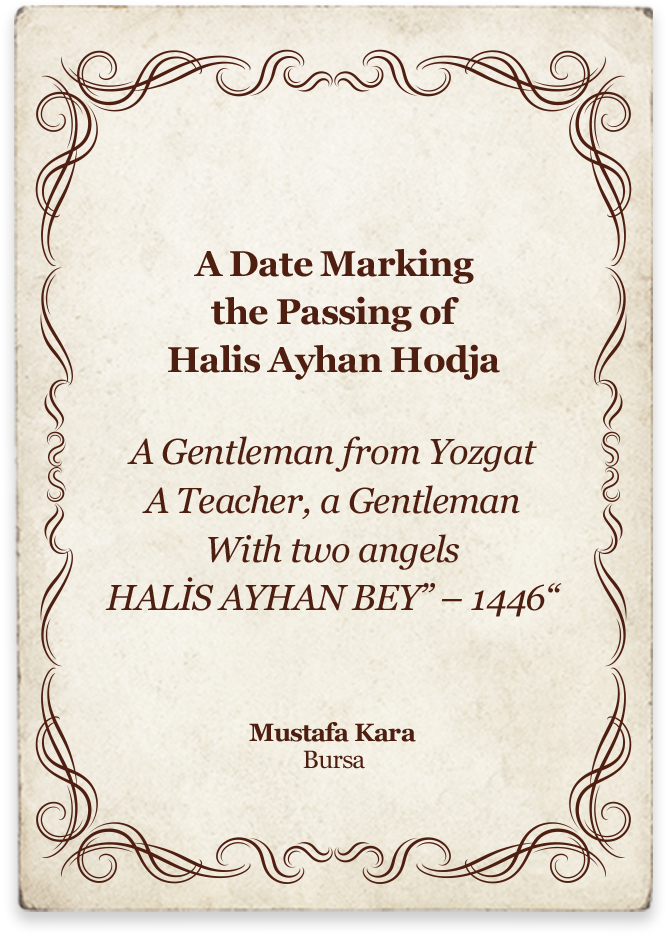
Prof. Dr. Halis Ayhan, who left a profound mark on the development of academic thought in religious education in Turkey, passed into eternity on May 23. He left behind a lifetime devoted to scholarship and a distinguished legacy as a revered mentor.
Born in 1944 in the village of Aşağı Sarıkaya in Boğazlıyan, Yozgat, Halis Ayhan began his education at Yozgat Imam Hatip High School (1962) and continued at Konya Higher Islamic Institute (1966). At a young age, he took on roles as a mufti and teacher, immersing himself in the lives of both the public and students. His academic journey began in 1970 as a faculty member at Kayseri Higher Islamic Institute, and in 1975, he became the founding director of Bursa Higher Islamic Institute, where he served for many years as both an educator and administrator. In 1983, he earned his doctorate from Uludağ University’s Institute of Social Sciences with his thesis titled “The Values Islam Brought to Education and the Contributions of Turks to Education”. Between 1987 and 1988, he spent time abroad.
His scholarly and administrative acumen brought him to the forefront not only in universities but also in foundational cultural institutions such as the TDV Encyclopedia of Islâm. Serving as its General Director from 1988 to 1991, he shaped the encyclopedia with his meticulousness and academic rigor. The challenges of publishing the early volumes, the editorial processes, and the careful engagement with contributors all formed the cornerstone of the institutional identity he helped establish. He was not only an administrator but also a contributor, authoring nine entries and sections for the encyclopedia.
In 1989, Prof. Dr. Halis Ayhan joined Marmara University’s Faculty of Theology, where, as the head of the Department of Religious Culture and Ethics Education, he became one of the key scholars shaping the pedagogical foundations of religious education. He was promoted to associate professor in 1994 and to full professor in 2000.
Selected Works: Religious Education and Instruction, DİB Publications, 1985; Introduction to Education and the Values Islam Brought to Education, Istanbul: Damla Publications, 1986; Introduction to Educational Sciences, Istanbul: Şule Publications, 1995; Child Development and Education (Co-authored), Istanbul: Ensar Publications, 1998; Religious Education in Turkey, Istanbul: Marmara University Faculty of Theology Publications, 1999; Education in the 21st Century and the Turkish Education System (with Orhan Oğuz and Ayla Oktay), Istanbul: SEDAR Publications, 2001, New Approaches to Religious and Ethical Education (with Hayati Hökelekli, Yurdagül Mehmedoğlu, Mustafa Öcal, and Halil Ekşi), Istanbul: DEM Publications, 2004.
Prof. Dr. Halis Ayhan, who passed away on May 23, 2025, was laid to rest at Umraniye Hekimbaşı Cemetery on May 24 following the noon prayer at Marmara University Faculty of Theology Mosque.
Like a footnote in the history of an encyclopedia: Prof. Dr. Halis Ayhan was not merely among those who wrote—he was among those who carried the weight of scholarship. We remember him with mercy and reverence.
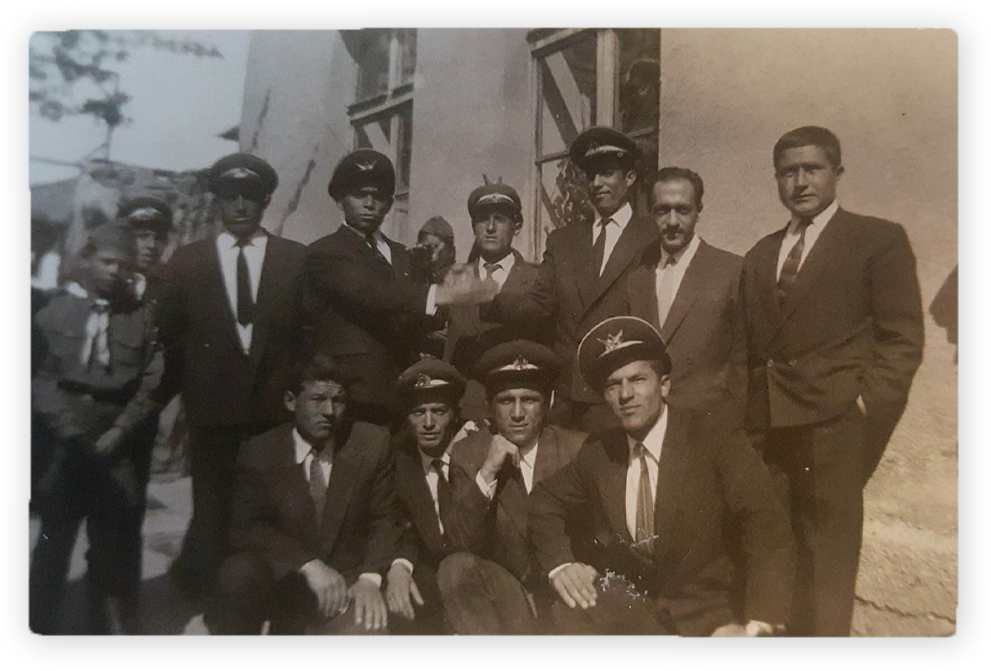
Student years at Yozgat İmam Hatip High School
Professor, during your student years, what place did encyclopedias hold among the primary sources shaping your intellectual world and scholarly curiosity?
Imagine a time when there were no computers. In our university years, whenever we needed to conduct research, encyclopedias were the universal gateway to knowledge. A vast range of encyclopedias had been published—on sports, history, art history, philosophical doctrines, and more. These works brought together structured knowledge and disseminated it through publication. During my student years at the Konya Higher Islamic Institute, we had a teacher named Muhammed Tayyip Okiç. He would speak to us about the encyclopedia published in Leiden. I was curious about the original English version, but we didn’t have access to it. Its Turkish translation was still ongoing. We would eagerly await its completion. This translation project had been undertaken by the Ministry of Education, in collaboration with Istanbul University, and was led by a committee under the chairmanship of Abdülhak Adnan Adıvar. Of course, we were aware of some of its deficiencies and shortcomings. But at the time, we didn’t know how a similar work could be produced ourselves. Whenever we gathered with Professor Tayyip, he would persistently pose the question: “Can Muslim scholars produce such an encyclopedia?” A new generation was also emerging at that time. We would often reflect on how we might support these young scholars in theology faculties and elsewhere, especially in terms of source material. Consequently, from the early 1980s onward, the idea of an encyclopedia began to be voiced by professors, administrators, and deans within theology faculties.
How was the need for religious knowledge to be compiled in reliable, accessible sources perceived at that time? Do you recall how you felt when you first heard that the TDV İslâm Encyclopedia would be initiated?
I first heard about the encyclopedia project in the early 1980s, probably around 1983. Theology professors were expressing the need for such an undertaking, and the question in Ankara was: “Who could actually carry it out?” It clearly required serious organization and institutional support. The view emerged that the Turkish Religious Foundation (TDV) could take on this responsibility. At the time, I was in Bursa. I came to Istanbul, and we held discussions around this matter. The vision was to create a work that would serve as a fundamental reference for the Islamic world—and even the world at large. Following these developments, the Directorate General of the Islamic Encyclopedia was established in 1983 under the auspices of the Diyanet Foundation. Ergun Göze and Ertuğrul Düzdağ briefly held managerial positions in its early phase. Later, Professor Ahmet Gürtaş from the Konya Higher Islamic Institute was appointed General Director. I believe it was Gürtaş who first transformed the institution into a fully functioning establishment. Since he was a friend of mine, and many colleagues were already involved in the project, I would visit the institution and closely follow its developments every time I came to Istanbul, starting from 1983.
How did your own path cross with the encyclopedia institutionally? Who offered you the position of General Director, and how did that process unfold?
It was toward the end of 1987 when Ahmet Gürtaş first offered me the position. He welcomed me at the airport upon my return from abroad. On the way, he said, “Halis, come join me in working on the İslâm Encyclopedia. Either become the assistant general director or take on the role of general director yourself, and I’ll assist you. If we combine our strengths, our proposals to Ankara and the Turkish Religious Foundation will be well received. After all, you’ve already served as director of a Higher Islamic Institute.” This was a significant gesture. Gürtaş had graduated two years before me, yet he humbly said, “If you’re not willing to be the assistant, then become the general director and let me assist you.” It was an admirable act of collegiality, offered for the sake of the project’s success. I responded, “This is not something I’m considering. My sole aim is to remain a teacher until retirement. Publication is not my area of interest.” With that, we parted ways and I returned to Bursa. Later, Deputy President of Religious Affairs Abdülbaki Keskin came to Bursa. This time, the offer came from him. While Gürtaş’s suggestion had been more of a thought experiment, Keskin’s proposal was formal—he was the vice president and head of the foundation. He had traveled to Bursa specifically for this reason. He explained in detail why I should accept the role, presenting various justifications to convince me. I won’t go into all of them here.
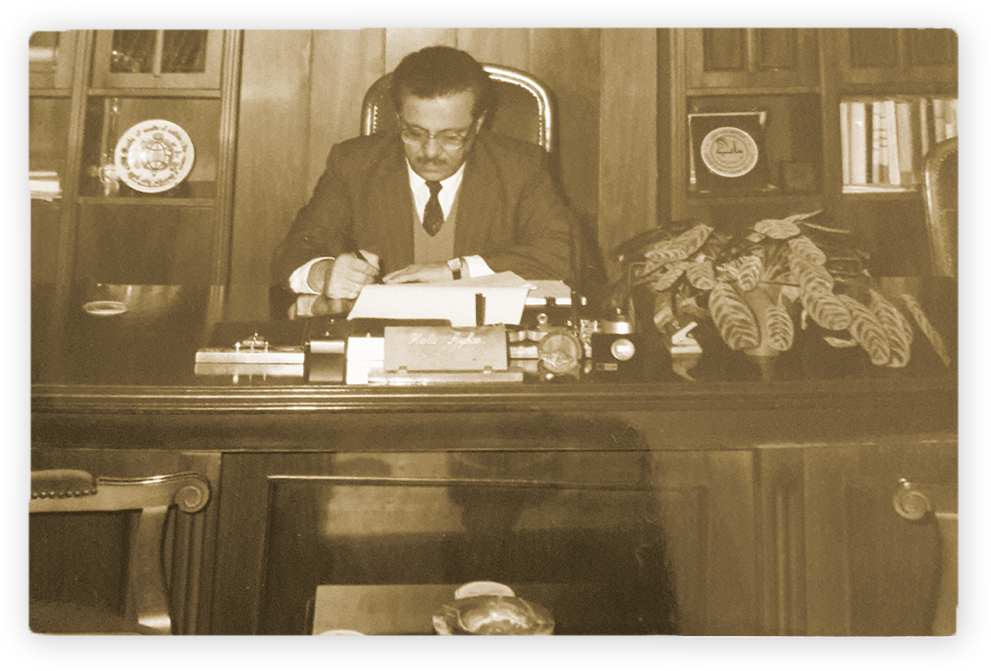
While serving as the Director of the TDV Encyclopedia of Islâm, in 1982
Professor, since we’re documenting this history, could you elaborate on Keskin’s reasons or the specifics of how you were chosen for this role?
Since we’ve begun, let me explain. Abdülbaki said: “Halis, you are someone well-known, respected, trusted in our scholarly circles. Gürtaş is definitely stepping down—he’s firm in his decision and couldn’t be persuaded otherwise. I got involved too, but he insisted on leaving, citing personal reasons. After that, people started searching for a replacement. Under the leadership of Bekir Topaloğlu, scholars in Istanbul convened to discuss: ‘Who should take over after Gürtaş?’” Abdülbaki told me: “Both Istanbul and Ankara agree on your name.” However, I later learned that this wasn’t entirely accurate. Several names, including mine, were submitted from Istanbul to Ankara and the Turkish Religious Foundation. But it was Ankara that ultimately said, unanimously, “Halis Ayhan.” So in that sense, what Abdülbaki said was partially true—there was consensus around my name between the two cities. Ankara, however, had its reservations about some of the other candidates submitted from Istanbul. In November 1988, I finally agreed. I was invited to Ankara, and during the board of trustees meeting, the role was formally offered to me. But I never discussed financial matters. The only condition I insisted on was this: “I will accept the General Directorship, but I will not give up teaching.” They agreed wholeheartedly and included this in the contract. “It would actually be better for us if the encyclopedia’s director remains active in teaching,” they said. “You’ll be in touch with scholars and understand their perspectives.” Thus, I signed the contract, and my journey with the İslâm Encyclopedia officially began.
When you began your position at the encyclopedia, at what stage was the project?
I arrived in Istanbul from Bursa in 1988. At that point, the encyclopedia had not yet been published; only a sample fascicle had been produced. In truth, during my tenure, I was unable to fully realize my vision for the encyclopedia. Let me record this for the sake of history. Here was the process: when an article was ready for publication, it would come from the author and undergo editing here. There were two editorial stages. One was literary editing, focusing on language and style—this was overseen by Ahmet Topaloğlu. That system had been put in place during Gürtaş’s time. It was a good structure, but I wanted to add one more step. I suggested that before publication, each article be submitted to the Publishing Director, Ahmet Yılmaz. Then, it would be returned to the author for final review and approval. Once the author signed off on it, we would proceed to publish. The purpose of this step was to prevent authors from later claiming, “You changed my article—you added or removed content.” However, in practice, things turned out differently. Our colleagues grew exhausted trying to implement this, and the process became unmanageable.
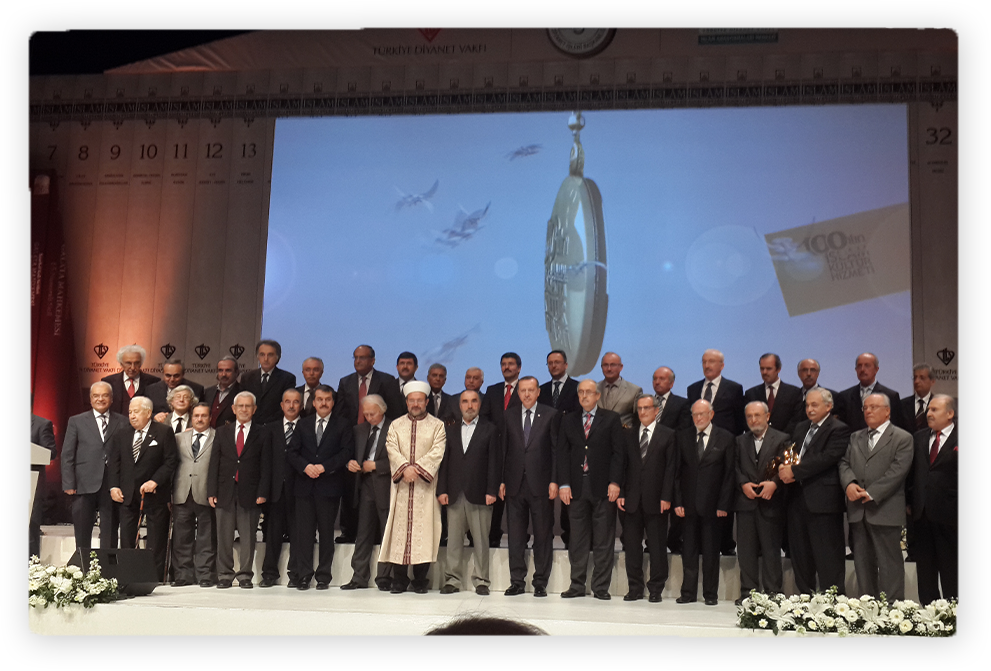
Century’s Honor and Service Awards for Contributions to Islamic Culture Ceremony, 2014
Could you share a concrete example of this challenge, Professor?
We experienced this with the article on Āb-ı Hayāt. The late Âmil Çelebioğlu was both the author of the entry and a classmate of Ahmet Topaloğlu, the head of the editorial committee. Âmil Bey had written an extremely lengthy piece—twenty to thirty pages. Of course, from his perspective, it was a deeply important text. When it came to our editorial committee, the concern was voiced: “If we publish an Āb-ı Hayāt article that runs thirty pages, this encyclopedia won’t finish in forty volumes—it will take a hundred!” So, they decided not to permit such length. A significant portion of what he had written was cut, and the article was reduced to five pages. In fact, we had set a word count limit when commissioning the entry. After seeing the final version, Çelebioğlu came to me and said, “I do not want this article published under my name.” “Why?” I asked. He replied, “Because much of what I wrote has been omitted. These specific points must be included.” I told him, “If we publish Āb-ı Hayāt as a twenty-five-page article, where will it end? What will we do in future volumes?” But he insisted, “Do as you will, but if you publish this as is, I will sue. I will go to a notary and document the differences between what I submitted and what was published.” And then he left.
I faced similar difficulties with many articles. As a result, we eventually had to abandon the practice of returning articles to authors after editing. As I mentioned earlier, once the draft left the author’s hands, it might be altered at the editorial center. That’s why you’ll see that many articles are signed “DİA” (the Turkish acronym for the encyclopedia). In fact, those entries do have authors. But in some cases, when no consensus could be reached between the author and the editorial team or director, the article was published under the encyclopedia’s institutional name.
What happened when the first volume was finally published, after such a challenging process?
After a long and delicate processes, the first volume was published in 1988. Naturally, we were overjoyed. At that time, the encyclopedia was released in fascicle format. Professor Dr. Mustafa Sait Yazıcıoğlu had become President of the Directorate of Religious Affairs. The buildings of the Turkish Religious Foundation were located in a place known as the Vahdettin Grove, within the garden of the current Presidential Mansion in Çengelköy. The grounds of the Vahdettin Pavilion had a truly distinguished appearance—it was one of the most beautiful spots along the Bosphorus. We celebrated the publication of the first volume there. I gave a speech to the colleagues. The President of Religious Affairs, Professor Dr. Mustafa Sait Yazıcıoğlu, and Professor Bekir Topaloğlu also gave speeches. Refreshments were served. All those who had contributed to the encyclopedia—whether in the editorial board or publishing department—attended. It became one of the most joyous celebrations of our lives. We arrived at ten in the morning. Lunch was served, and the ceremony continued until late afternoon. After that, we immediately began working on the next volume, which again took about a year to complete. In the second year of my directorship, we celebrated the second volume at a restaurant. By the time we reached the third volume, however, differences in vision regarding my approach and understanding of the encyclopedia began to surface. Though we had completed work on the third volume by 1991, I left the encyclopedia before it was published. I then began teaching in the Department of Religious Education at the Faculty of Theology, Marmara University. Thus, my journey with the encyclopedia, at least in terms of administrative responsibility, came to an end. However, I continued my involvement as a contributor of entries.
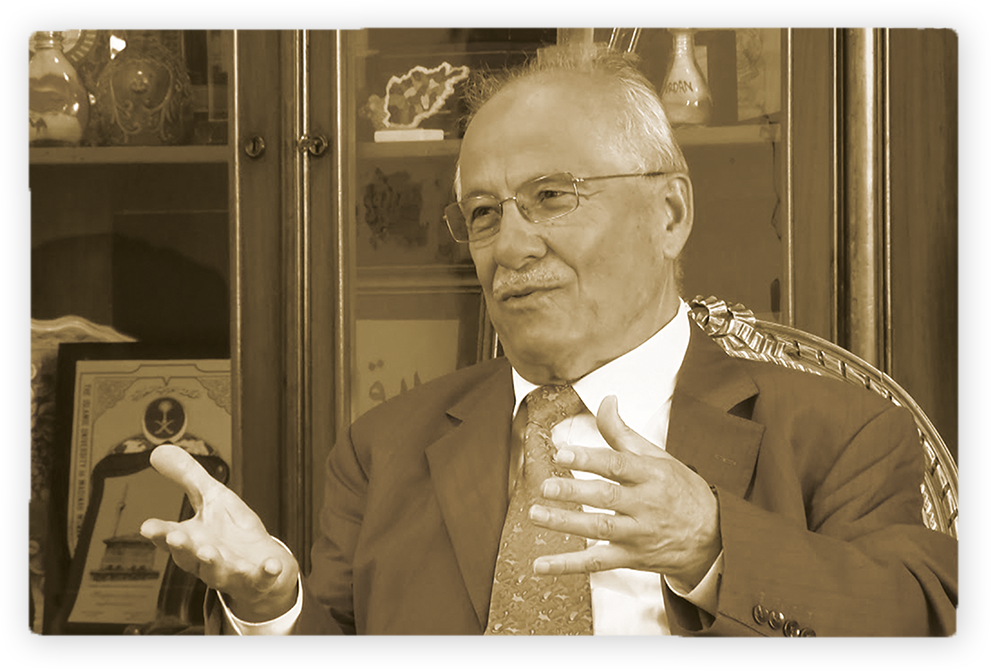
During an interview in his retirement period
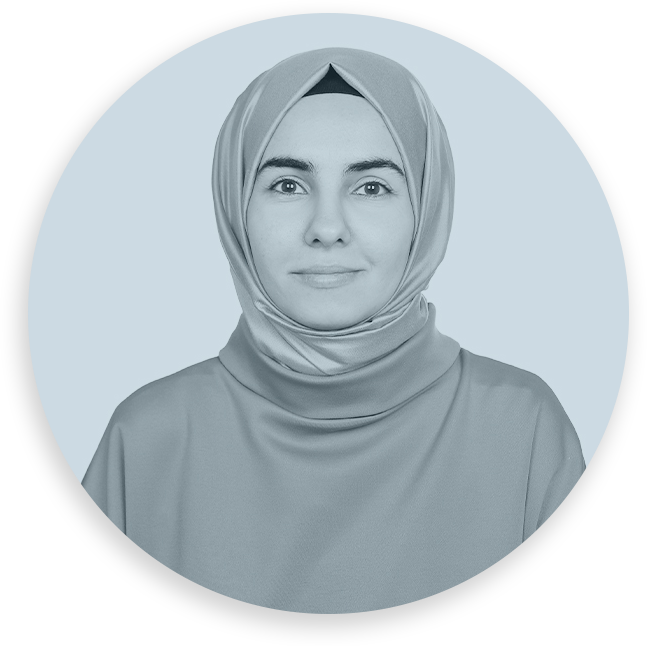 |
Arzu Güldöşüren He graduated from the Faculty of Letters at Istanbul University (2000). He completed his master’s degree at the Institute of Social Sciences, Marmara University, with his thesis titled “Ilmiye Ricali According to Tarik Registers in the First Half of the 19th Century” (2004) and earned his Ph.D. with his dissertation “The Ottoman Ulama in the Era of Mahmud II” (2013). He served at the Foundation for Science and Arts (2015–2018). In 2024, he was awarded the title of Associate Professor. He is currently affiliated with the TDV Centre for Islamic Studies (İSAM). |
